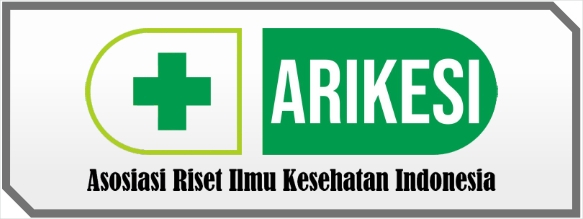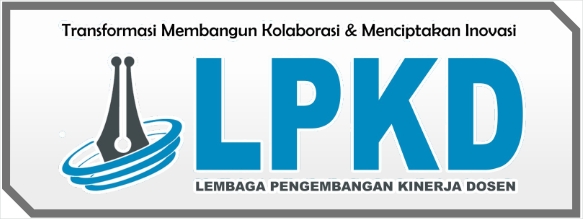Analisis Penerapan SKKNI Radiografer Dalam Tindakan PCI Di Ruang Intervensi Rumah Sakit Bhayangkara TK.I Pusdokkes Polri Jakarta Timur
DOI:
https://doi.org/10.55606/klinik.v3i1.2290Keywords:
Coronary Artery Disease, Percutaneous Coronary Intervention, Indonesian National Work Competency StandardsAbstract
Background: Coronary Artery Disease (CAD) is a blockage or narrowing of the coronary arteries that carry blood to the heart muscle. The results of the 2018 Basic Health Research based on doctors' diagnoses stated that coronary heart disease in Indonesia was 1.5% with a prevalence in the DKI Jakarta area reaching 1.9%. Percutaneous Coronary Intervention (PCI) is a procedure or act of widening narrowed coronary arteries using a balloon aimed/directed across a catheter.
Objective: To determine the application of the radiographer's SKKNI in PCI procedures in the Intervention Room at the Bhayangkara TK.I Pusdokkes Polri East Jakarta Hospital.
Method: The research used is a descriptive qualitative method, namely describing the results of observations. This research was conducted in July 2023 in the Intervention Room at Bhayangkara TK.I Pusdokkes Polri East Jakarta Hospital. The subjects in this study were three radiographers in the Intervention Room at the Bhayangkara TK.I Pusdokkes Polri East Jakarta Hospital. The data collection methods used in this research are observation, interviews and documentation. The data method and analysis uses an interactive model method with stages of data collection, data processing, and data presentation, and discussion and conclusions.
Results: Of the 25 criteria for work on the SKKNI radiographer, there are 20 criteria for appropriate work and 5 criteria for inappropriate work. The criteria for inappropriate work are the radiographer not preparing the injector machine, not preparing the emergency trolley and its equipment (medicines and others), did not educate the patient, did not re-check the informed consent and did not regulate the injector machine. Elements of radiographer competency in the SKKNI include pre-examination procedures, equipment and supplies preparation, patient preparation, examination management procedures and post-examination procedures.
References
Rahmawati H & Hartono B,(2021). Kepaniteraan di Instalasi Radiologi Rumah Sakit. Muhammadiyah Public Health Journal. Vol 1, No(2),140. https://jurnal.umj.ac.id/index.php/MPHJ.
American College Of Radiology,(2019). ACR–SIR–SNIS–SPR Practice Parameter For The Clinical Practice Of Interventional Radiology. Amerika Serikat, (Revised 2019).2
Dari D. W., Wulandari P. I., & Kusman, (2023). Evaluasi Implementasi Proteksi Radiasi Di Ruang Radiologi Intervensi Instalasi RIR RSUP Prof. Dr. I.G.N.G Ngoerah. Humantech : Jurnal Ilmiah Multidisplin Indonesia. Vol 2 No (3),605. https://doi.org/10.32670/ht.v2i3.2942
Harselia S. A & Putri A. K, (2018). Tindakan Percutaneous Coronary Intervention Pada Pasien Stenosis Arteri Koroner Kanan. Jurnal Arsip Kardiovaskular Indonesia (ARKAVI). Vol 03 No(1),2. https://doi.org/10.22236/arkavi.v3i1.3687
Pratiwi F. W & Saragi J. S, (2018). Pemantauan Kateterisasi Jantung Pada Tindakan PTCA Terhadap Pasien CAD. Jurnal Arsip Kardiovaskular Indonesia (ARKAVI). Vol 03 No(1),183. doi: 10.1016/B978
Kemenkes, (2018). Riset Kesehatan Dasar. Jakarta : Kementrian Kesehatan Republik Indonesia
Permenkes, (2020). Peraturan Menteri Kesehatan Republik Indonesia Nomor 24 Tahun 2020 Tentang Pelayanan Radiologi Klinik. Jakarta : Kementrian Kesehatan Republik Indonesia.
Kemenaker, (2020).Penetapan Standar Kompetensi Kerja Nasional Indonesia Kategori Aktivitas Kesehatan Manusia Dan Aktivitas Sosial Golongan Pokok Aktivitas Kesehatan Manusia Bidang Radiografer. Jakarta : Kementerian Ketenagakerjaan Republik Indonesia.
R.Hwang Joshua et al. (2013). Contrast Volume Use in Manual vs Automated Contrast Injection Systems for Diagnostic Coronary Angiography and Percutaneous Coronary Interventions. Canadian Journal of Cardiology 29 372-376, Elsevier, http://dx.doi.org/10.1016/j.cjca.2012.11.023


















